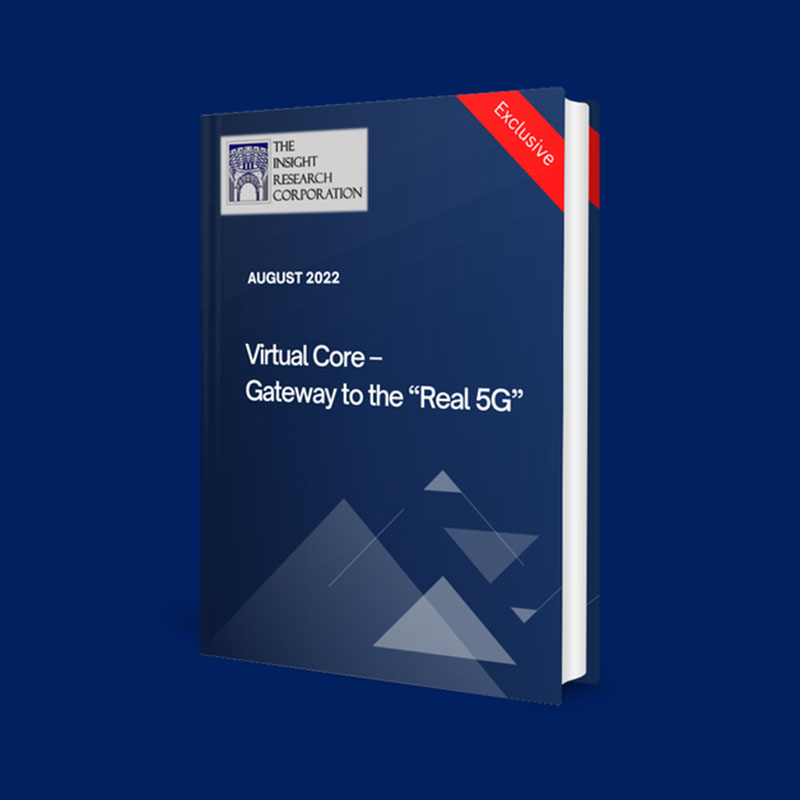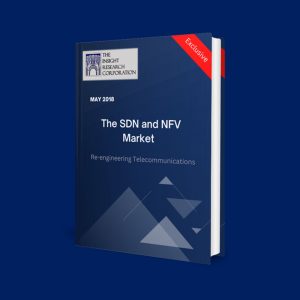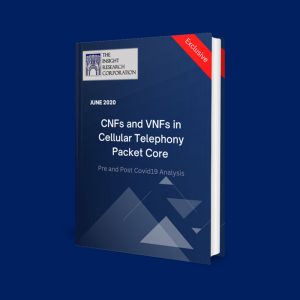Table of Contents
- Executive Summary
1.1 The Delayed Standalone Mode Rollout
1.1.1 Core Market Segmentation, by Virtualization Type
1.2 Report Organization and Market Forecast Taxonomy
- The Core Journey
2.1 The Core and its Evolution
2.2 Contours of EPC
2.2.1 SAE and the Flat Architecture
2.2.2 Decoupling of Planes
2.2.3 NAS
2.2.4 Blocks in the EPC
2.2.4.1 SGW
2.2.4.2 PGW
2.2.4.3 ePDG
2.2.4.4 TWAG
2.2.4.5 MME
2.2.4.6 HSS
2.2.4.7 Other optional elements
2.3 The 5G Core (5GC)
2.3.1 SA versus NSA
2.3.2 NEC Converged Core
2.3.3 5GC Functions
2.4 Virtualization of the Core
2.4.1 Contrary, yet Complementary Trends
2.4.2 The Optimized Spending Pattern
2.4.3 The Mechanics
2.4.4 The Challenges
- VNFs – VMs and Containers
3.1 VM-based VNFs
3.1.1 History and Progression
3.1.2 NFV architecture
3.1.2.1 VNFi/NFVi
3.1.2.2 VNFs
3.1.2.3 MANO
3.2 Containers – The Challengers
3.2.1 What are Containers?
3.2.2 Microservices
3.2.3 Container Morphology
3.2.3.1 Provisioning and Run-time Management Block
3.2.3.1.1 Docker Engine
3.2.3.2 Orchestration Block
3.2.3.2.1 Kubernetes
3.2.3.3 Application Deployment Block
3.2.4 Container Deployment Methodologies
3.2.4.1 Virtual Machine (VM)
3.2.4.2 Bare Metal
3.2.4.3 Cloud or Container as-a-Service (CaaS)
3.2.5 Stateful and Stateless Containers
3.2.6 CNCF and CNFs
3.3 Contrasting Containers and VMs
3.4 Advantage Container-based VNFs
3.4.1 Freedom from Hypervisors
3.4.2 File-level Resource Management
3.4.3 Portability
3.4.4 Microservices-powered Scalability and Granularity
3.4.5 Quick Operationalization
3.4.6 Quick Orchestration with a Caveat
3.4.7 Containers and 5G
3.5 Challenges Confronting Container-based VNFs
3.5.1 Familiarity with VMs
3.5.2 Telco Demands
3.5.3 Latency
3.5.4 Security
3.5.5 Flexibility
3.5.6 Hardware Enhancements
3.6 Blending Containers with NFV
3.6.1 NFVi and CNF
3.6.2 MANO and Containers
3.6.2.1 ONAP and CNFs
3.6.2.2 OSM and CNFs
- Telco Profiles
4.1 Telcos – Cautious, Yet Optimistic About 5G-SA
4.2 Telco profiles
4.3 Airtel
4.3.1 Core Virtualization Initiatives
4.4 AT&T
4.4.1 Core Virtualization Initiatives
4.5 BT
4.5.1 Core Virtualization Initiatives
4.6 China Mobile
4.6.1 Core Virtualization Initiatives
4.7 China Telecom
4.7.1 Core Virtualization Initiatives
4.8 China Unicom
4.8.1 Core Virtualization Initiatives
4.9 Deutsche Telekom
4.9.1 Core Virtualization Initiatives
4.10 Etisalat
4.10.1 Core Virtualization Initiatives
4.11 Jio
4.11.1 Core Virtualization Initiatives
4.12 KDDI
4.12.1 Core Virtualization Initiatives
4.13 KT
4.13.1 Core Virtualization Initiatives
4.14 LG Uplus
4.14.1 Core Virtualization Initiatives
4.15 Lifecell Ukraine
4.15.1 Core Virtualization Initiatives
4.16 M1 Singapore
4.16.1 Core Virtualization Initiatives
4.17 NTT DoCoMo
4.17.1 Core Virtualization Initiatives
4.18 Ooredoo
4.18.1 Core Virtualization Initiatives
4.19 Optus (Singtel Optus)
4.19.1 Core Virtualization Initiatives
4.20 Orange
4.20.1 Core Virtualization Initiatives
4.21 Rakuten
4.21.1 Core Virtualization Initiatives
4.22 Saudi Telecom (STC)
4.22.1 Core Virtualization Initiatives
4.23 Singtel
4.23.1 Core Virtualization Initiatives
4.24 SK Telecom
4.24.1 Core Virtualization Initiatives
4.25 Softbank
4.25.1 Core Virtualization Initiatives
4.26 Swisscom
4.26.1 Core Virtualization Initiatives
4.27 T-Mobile
4.27.1 Core Virtualization Initiatives
4.28 TIM/Telecom Italia
4.28.1 Core Virtualization Initiatives
4.29 Telenor
4.29.1 Core Virtualization Initiatives
4.30 Telefonica
4.30.1 Core Virtualization Initiatives
4.31 Telia
4.31.1 Core Virtualization Initiatives
4.32 Telkom Indonesia
4.32.1 Core Virtualization Initiatives
4.33 Telstra
4.33.1 Core Virtualization Initiatives
4.34 Turk Telecom
4.34.1 Core Virtualization Initiatives
4.35 Turkcell
4.35.1 Core Virtualization Initiatives
4.36 Veon VimpelCom
4.36.1 Core Virtualization Initiatives
4.37 Verizon
4.37.1 Core Virtualization Initiatives
4.38 Vodafone
4.38.1 Core Virtualization Initiatives
- Solution Provider Profiles
5.1 Organization Categories
5.1.1 Equipment Vendors
5.1.2 Independent Software Vendors (ISV)
5.1.3 Semiconductor Specialists
5.1.4 Hardware, OS and Firmware Specialists
5.1.5 Niche Solution Developers
5.2 Mergers and Funding Related Developments
5.3 Company Profiles
5.4 6WIND
5.4.1 Core Virtualization Initiatives
5.4.1.1 6WINDGate
5.5 Affirmed Networks
5.5.1 Core Virtualization Initiatives
5.5.1.1 vEPC
5.5.1.2 Virtual Slice Selection Function (vSSF)
5.5.1.3 UnityCloud
5.6 Athonet
5.6.1 Core Virtualization Initiatives
5.6.1.1 Connectivity Platform
5.7 Baicells
5.7.1 Core Virtualization Initiatives
5.7.1.1 vEPC/LTE Core
5.8 Cirrus Core Networks (CCN)
5.8.1 Core Virtualization Initiatives
5.8.1.1 vEPC
5.8.1.2 vIMS
5.9 Cisco Systems
5.9.1 Core Virtualization Initiatives
5.9.1.1 Ultra Cloud Core
5.9.1.2 Ultra-Packet Core
5.9.1.3 Other Developments
5.10 Dell EMC
5.10.1 Core Virtualization Initiatives
5.10.1.1 Open Networking Switches
5.10.1.2 5G Core Solution
5.10.1.3 Other Developments
5.11 Enea
5.11.1 Core Virtualization Initiatives
5.11.1.1 5G Microcore
5.11.1.2 Unified Data Manager
5.11.1.3 Other Developments
5.12 Ericsson
5.12.1 Core Virtualization Initiatives
5.12.1.1 Cloud Native Application (CNA)
5.12.1.2 5G Core
5.12.1.3 CI/CD
5.12.1.4 Ericsson – Cloud Packet Core
5.12.1.5 Cloud-native NFVi
5.12.1.6 Other Developments
5.13 Huawei
5.13.1 Core Virtualization Initiatives
5.13.1.1 Other Initiatives
5.14 Intel
5.14.1 Core Virtualization Initiatives
5.14.1.1 5G-UPF
5.14.1.2 FPGA
5.14.1.3 Other Developments
5.15 Mavenir
5.15.1 Core Virtualization Initiatives
5.15.1.1 Cloud Native IMS
5.15.1.2 Converged Packet Core
5.15.1.3 vEPC
5.15.1.4 Other Developments
5.16 Metaswitch
5.16.1 Core Virtualization Initiatives
5.16.1.1 Packet Core
5.16.1.2 Fusion Core
5.16.1.3 Clearwater IMS Core
5.16.1.4 Other Developments
5.17 NEC/Netcracker
5.17.1 Core Virtualization Initiatives
5.17.1.1 Converged Core
5.17.1.2 Other Developments
5.18 Nokia
5.18.1 Core Virtualization Initiatives
5.18.1.1 Nokia – Cloud Packet Core
5.18.1.1.1 CNRD
5.18.1.1.2 CMM
5.18.1.1.3 CMG
5.18.1.2 Telecom Application Server
5.18.1.3 5G Core
5.18.1.4 Other Developments
5.19 Oracle
5.19.1 Core Virtualization Initiatives
5.19.1.1 Assorted Core NFs
5.19.1.2 5G SCP
5.19.1.3 5G NRF
5.19.1.4 5G PCF
5.19.1.5 Other Developments
5.20 Red Hat
5.20.1 Core Virtualization Initiatives
5.20.1.1 OpenShift Container Platform
5.20.1.2 5G Core Container
5.20.1.3 Ansible
5.20.1.4 Other Developments
5.21 Samsung
5.21.1 Core Virtualization Initiatives
5.21.1.1 Samsung 5G Core
5.21.1.2 AdaptiV
5.21.1.3 Other Developments
5.21.2 Core Virtualization Initiatives
5.21.2.1 BreezeWAY
5.21.2.2 BreezeNEXT
5.22 VMware
5.22.1 Core Virtualization Initiatives
5.22.1.1 VMWare Telco Cloud
5.22.1.2 NSX
5.22.1.3 X-Factor
5.22.1.4 Other Developments
5.23 Wind River
5.23.1 Core Virtualization Initiatives
5.23.1.1 Titanium Cloud Product Portfolio
5.23.1.2 Kubernetes
5.24 ZTE
5.24.1 Core Virtualization Initiatives
5.24.1.1 Cloud Common Core
5.24.1.2 vEPC
5.24.1.3 TECS
5.24.1.4 Other Developments
5.25 Casa Systems
5.25.1 Core Virtualization Initiatives
5.25.1.1 Axyom Software Platform
5.25.1.1.1 Axyom 5G Core
5.25.1.1.2 Axyom EPC
5.25.1.2 Other Developments
5.26 HPE
5.26.1 Core Virtualization Initiatives
5.26.1.1 HPE 5G Core Stack
5.26.1.2 Other Developments
- Quantitative Forecasts
6.1 Research Methodology
6.2 Forecast Taxonomy
6.3 Analysis of the Overall Virtualized Core Market
6.3.1 Mobile Telephony Generation
6.3.2 End-user
6.3.3 Solution Morphology
6.3.4 Hosting Mode
6.3.5 Regional Breakdown
6.4 Analysis of the VM-based Core Market
6.4.1 VM Morphology
6.4.2 End-user
6.4.3 Solution Morphology
6.4.4 Hosting Mode
6.4.5 Regional Breakdown
6.5 Analysis of the Container-based Core Market
6.5.1 Container Morphology
6.5.2 End-user
6.5.3 Solution Morphology
6.5.4 Hosting Mode
6.5.5 Deployment Methodology
6.5.6 Regional Breakdown
7. Glossary and Acronyms
- Executive Summary
1.1 What about Open RAN?
1.2 Has vRAN changed form?
1.2.1 VM-based vRAN
1.2.2 Container-based vRAN
1.3 Market Overview
- Virtualization of Network Functions
2.1 Introduction
2.2 VM-based Approach; a.k.a. NFV Earlier
2.2.1 VNFi/NFVi
2.2.2 MANO
2.2.2.1 Virtualized Infrastructure Manager (VIM)
2.2.2.2 VNF Manager (VNFM)
2.2.2.3 NFV Orchestrator (NFVO)
2.2.3 VNF
2.3 Container-based Approach; a.k.a. CNF Earlier
2.3.1 What are Containers?
2.3.2 Microservices
2.3.3 Container Morphology
2.3.3.1 Provisioning and Run-time Management Block
2.3.3.1.1 Docker Engine
2.3.3.2 Orchestration Block
2.3.3.2.1 Kubernetes
2.3.3.3 Application Deployment Block
2.3.4 CNCF
2.4 Contrasting VMs and Containers
- Virtualization of the RAN
3.1 The RAN and its Evolution
3.1.1 Closer Look at E-UTRAN
3.1.2 5G- NR, NSA and SA
3.1.3 MEC
3.2 The Progression of the RAN to the vRAN
3.3 How VM-based and Container-based vRANs Compare?
3.3.1 The Need for Containers
3.3.1.1 Advantage Containers
3.3.1.2 Challenges Confronting Containers
3.3.2 The Rigid CPRI
3.4 RAN Virtualization – A Story of Alliances
3.4.1 O-RAN Alliance
3.4.1.1 Architecture and Approach to RAN Layer Split
3.4.2 Open vRAN (O-vRAN)
3.4.2.1 Architecture and Approach to RAN Layer Split
3.4.3 Telecom Infra Project (TIP) OpenRAN
3.4.3.1 Architecture and Approach to RAN Layer Split
- Telco Profiles
4.1 Telco profiles
4.2 Airtel
4.2.1 VM and Container-based vRAN Initiatives
4.3 AT&T
4.3.1 VM and Container-based vRAN Initiatives
4.4 BT
4.4.1 VM and Container-based vRAN Initiatives
4.5 China Mobile
4.5.1 VM and Container-based vRAN Initiatives
4.6 China Telecom
4.6.1 VM and Container-based vRAN Initiatives
4.7 China Unicom
4.7.1 VM and Container-based vRAN Initiatives
4.8 Deutsche Telekom
4.8.1 VM and Container-based vRAN Initiatives
4.9 Etisalat
4.9.1 VM and Container-based vRAN Initiatives
4.10 Jio
4.10.1 VM and Container-based vRAN Initiatives
4.11 KDDI
4.11.1 VM and Container-based vRAN Initiatives
4.12 KT
4.12.1 VM and Container-based vRAN Initiatives
4.13 LG Uplus
4.13.1 VM and Container-based vRAN Initiatives
4.14 M1 Singapore
4.14.1 VM and Container-based vRAN Initiatives
4.15 NTT DoCoMo
4.15.1 VM and Container-based vRAN Initiatives
4.16 Ooredoo
4.16.1 VM and Container-based vRAN Initiatives
4.17 Optus (Singtel Optus)
4.17.1 VM and Container-based vRAN Initiatives
4.18 Orange
4.18.1 VM and Container-based vRAN Initiatives
4.19 Rakuten
4.19.1 VM and Container-based vRAN Initiatives
4.20 Saudi Telecom (STC)
4.20.1 VM and Container-based vRAN Initiatives
4.21 Singtel
4.21.1 VM and Container-based vRAN Initiatives
4.22 SK Telecom
4.22.1 VM and Container-based vRAN Initiatives
4.23 Softbank
4.23.1 VM and Container-based vRAN Initiatives
4.24 Swisscom
4.24.1 VM and Container-based vRAN Initiatives
4.25 T-Mobile
4.25.1 VM and Container-based vRAN Initiatives
4.26 TIM/Telecom Italia
4.26.1 VM and Container-based vRAN Initiatives
4.27 Telenor
4.27.1 VM and Container-based vRAN Initiatives
4.28 Telefonica
4.28.1 VM and Container-based vRAN Initiatives
4.29 Telia
4.29.1 VM and Container-based vRAN Initiatives
4.30 Telkom Indonesia
4.30.1 VM and Container-based vRAN Initiatives
4.31 Telstra
4.31.1 VM and Container-based vRAN Initiatives
4.32 Turk Telecom
4.32.1 VM and Container-based vRAN Initiatives
4.33 Turkcell
4.33.1 VM and Container-based vRAN Initiatives
4.34 Veon VimpelCom
4.34.1 VM and Container-based vRAN Initiatives
4.35 Verizon
4.35.1 VM and Container-based vRAN Initiatives
4.36 Vodafone
4.36.1 VM and Container-based vRAN Initiatives
- Solution Provider Profiles
5.1 Containers and the Vendors
5.2 Organization Categories
5.2.1 Telecommunications Domain Experts
5.2.2 DAS Specialists
5.2.3 Equipment Vendors
5.2.4 Independent Software Vendors (ISV)
5.2.5 Semiconductor Specialists
5.2.6 Hardware, OS and Firmware Specialists
5.2.7 Niche Solution Developers
5.3 Company Profiles
5.4 6WIND
5.4.1 VM and Container-based vRAN Initiatives
5.4.1.1 6WINDGate
5.4.1.2 Other Developments
5.5 Accelleran
5.5.1 VM and Container-based vRAN Initiatives
5.5.1.1 dRAX
5.5.1.2 Other Developments
5.6 Airspan
5.6.1 VM and Container-based vRAN Initiatives
5.6.1.1 Air5G OpenRange
5.6.1.1.1 OpenRANGE Software,
5.6.1.2 AirSymphony
5.6.1.3 Other Developments
5.7 Altiostar
5.7.1 VM and Container-based vRAN Initiatives
5.7.1.1 Altiostar – vRAN
5.7.1.1.1 Open vRAN software
5.7.1.1.2 vBBU
5.7.1.1.3 Radio
5.7.1.2 Other Developments
5.8 Amarisoft
5.8.1 VM and Container-based vRAN Initiatives
5.8.1.1 LTE and 5G NR software
5.8.1.2 Other Developments
5.9 ASOCS
5.9.1 VM and Container-based vRAN Initiatives
5.9.1.1 Cyrus 4.0
5.9.1.2 Other Developments
5.10 Cisco Systems
5.10.1 VM and Container-based vRAN Initiatives
5.10.2 Open vRAN
5.10.2.1 Other Developments
5.11 Commscope
5.11.1 VM and Container-based vRAN Initiatives
5.11.1.1 OneCell Controller
5.11.1.2 Other Developments
5.12 Dali Wireless
5.12.1 VM and Container-based vRAN Initiatives
5.12.1.1 Dali – Matrix vFI
5.12.1.2 Other Developments
5.13 Dell EMC
5.13.1 VM and Container-based vRAN Initiatives
5.13.1.1 Open Networking Switches
5.13.1.2 Virtual Edge Platform
5.13.1.3 Other Developments
5.14 Ericsson
5.14.1 VM and Container-based vRAN Initiatives
5.14.1.1 Cloud Native Application (CNA)
5.14.1.2 vRAN
5.14.1.3 Cloud-native NFVi
5.14.1.4 Cloud RAN
5.14.1.5 Other Developments
5.15 Huawei
5.15.1 VM and Container-based vRAN Initiatives
5.15.1.1 5G RAN Gear
5.15.1.2 Other Initiatives
5.16 Intel
5.16.1 VM and Container-based vRAN Initiatives
5.16.1.1 RAN
5.16.1.2 Silicon Photonics
5.16.1.3 Other Developments
5.17 JMA Wireless
5.17.1 VM and Container-based vRAN Initiatives
5.17.1.1 XRAN Adaptive Baseband Software
5.17.1.2 Other Developments
5.18 Mavenir
5.18.1 VM and Container-based vRAN Initiatives
5.18.1.1 4G/5G OpenRAN
5.18.1.2 vRAN
5.18.1.3 Open vRAN
5.18.1.4 Other Developments
5.19 NEC/Netcracker
5.19.1 VM and Container-based vRAN Initiatives
5.19.1.1 Open vRAN
5.19.1.2 Radio Units (RU)
5.19.1.3 Other Developments
5.20 Nokia
5.20.1 VM and Container-based vRAN Initiatives
5.20.1.1 Nokia – AirScale
5.20.1.2 Other Developments
5.21 Parallel Wireless
5.21.1 VM and Container-based vRAN Initiatives
5.21.1.1 OpenRAN
5.21.1.2 Other Developments
5.22 Phluido
5.22.1 VM and Container-based vRAN Initiatives
5.22.1.1 Phluido – vRAN Layer-1
5.22.1.2 Radio-as-a-Service (RaaS)
5.22.1.3 Other Developments
5.23 Platform9
5.23.1 VM and Container-based vRAN Initiatives
5.23.1.1 Open-Source SaaS Managed Solution
5.23.1.2 Other Developments
5.24 Radisys
5.24.1 VM and Container-based vRAN Initiatives
5.24.1.1 MobilityEngine
5.24.1.2 Open RAN
5.24.1.3 Other Developments
5.25 Red Hat
5.25.1 VM and Container-based vRAN Initiatives
5.25.1.1 OpenShift Container Platform
5.25.1.2 Ansible
5.25.1.3 Other Developments
5.26 Robin.io
5.26.1 VM and Container-based vRAN Initiatives
5.26.1.1 Other Developments
5.27 Samsung
5.27.1 VM and Container-based vRAN Initiatives
5.27.1.1 vRAN
5.27.1.2 Other Developments
5.28 VMware
5.28.1 VM and Container-based vRAN Initiatives
5.28.1.1 NSX
5.28.1.2 X-Factor
5.28.1.3 Telco Cloud Platform RAN
5.28.1.4 Other Developments
5.29 Wind River
5.29.1 VM and Container-based vRAN Initiatives
5.29.1.1 Titanium Cloud Product Portfolio
5.29.1.2 Kubernetes
5.29.1.3 Wind River Studio
5.29.1.4 Other Developments
5.30 ZTE
5.30.1 VM and Container-based vRAN Initiatives
5.30.1.1 TECS
5.30.1.2 Other Developments
- Quantitative Forecasts
6.1 Report Taxonomy
6.2 Research Methodology
6.3 Foreword
6.3.1 Container Morphology
6.3.2 Deployment Methodology
6.3.3 Geographical Regions
6.4 Global Markets
6.4.1 End Users
6.4.2 RAN Morphology
6.4.3 Hosting Modes
6.4.4 Geographical Regions
6.5 VM-based vRAN Market
6.5.1 NFV Component
6.5.2 End-user
6.5.3 RAN Morphology
6.5.4 Hosting Mode
6.5.5 Geographical Regions
6.6 Container-based vRAN Market
6.6.1 Container Morphology
6.6.2 End-user
6.6.3 RAN Morphology
6.6.4 Hosting Mode
6.6.5 Deployment Methodology
6.6.6 Geographical Regions




